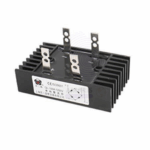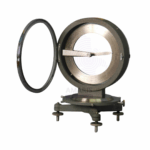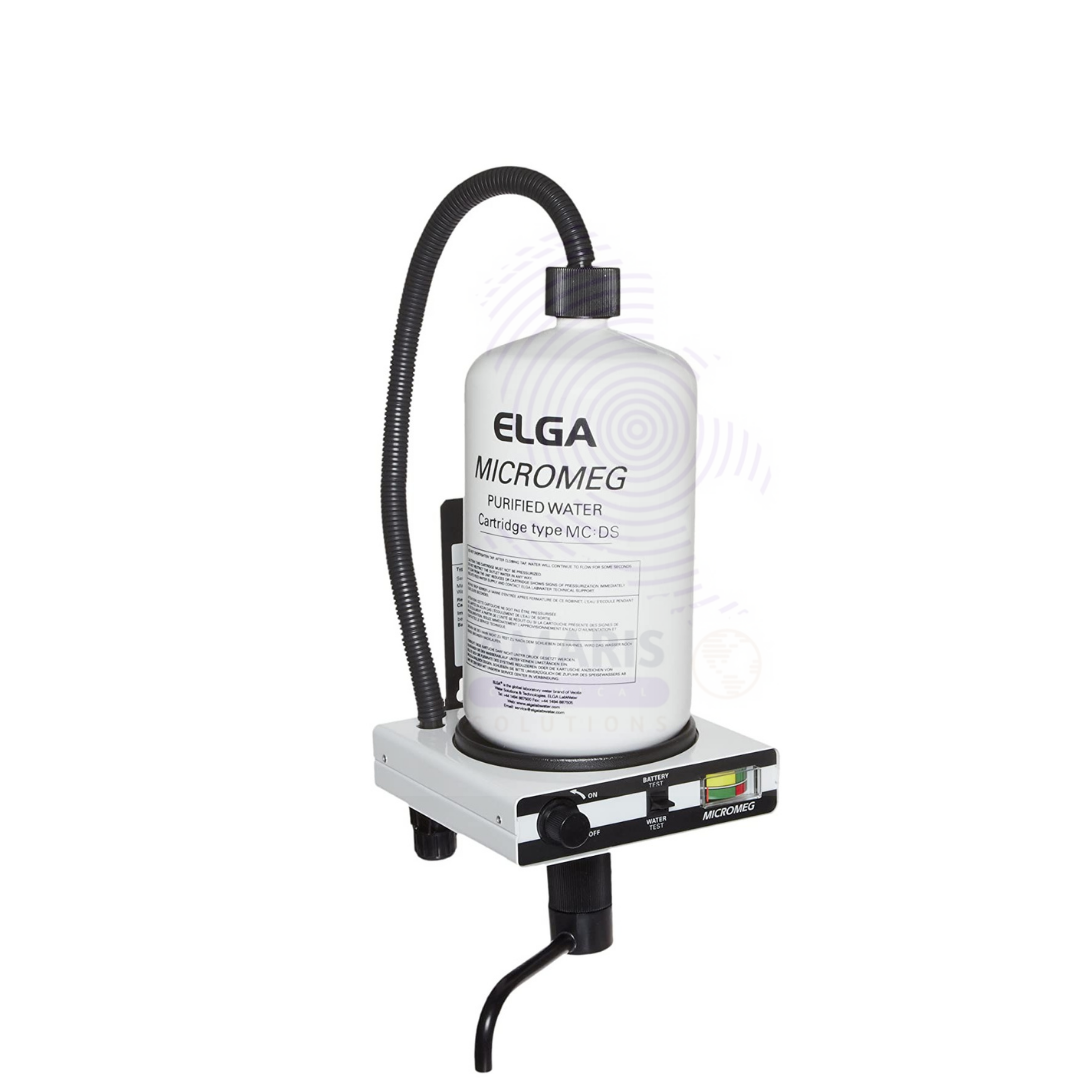

Dionizer Elga Can
$ 108.55 Original price was: $ 108.55.$ 108.20Current price is: $ 108.20.
The Dionizer Elga Can is a high-performance deionization cartridge used for producing ultra-pure water in laboratory and industrial water purification systems. Specifically designed for compatibility with ELGA water systems, this canister contains high-capacity ion exchange resins that effectively remove dissolved ionic contaminants such as salts, minerals, and metal ions from feedwater. The result is deionized water of high resistivity suitable for sensitive analytical and experimental procedures. Dionizer Elga Cans are crucial in maintaining water purity for applications involving spectroscopy, chromatography, microbiology, and molecular biology. These sealed, easy-to-replace cartridges ensure consistent water quality, system integrity, and regulatory compliance across various laboratory environments.
Dionizer Elga Can
Primary Uses
- Laboratory Water Purification Systems
- Produces high-resistivity water (typically 18.2 MΩ·cm) for analytical-grade procedures.
- Used in HPLC, GC-MS, and ICP-MS applications to avoid interference from ions.
- Essential for preparation of reagents, buffers, and media in molecular biology.
- Supports clean rinsing in glassware washing systems.
- Provides ultra-pure water for spectrophotometric and electrochemical analysis.
Secondary Uses
- Industrial, Pharmaceutical, and Clinical Settings
- Used in pharmaceutical production for preparation of injectable and non-injectable solutions.
- Applied in electronics manufacturing for rinsing and cleaning sensitive components.
- Utilized in clinical labs for sample dilution and equipment sterilization.
- Integrated into water polishing stages in ultrapure water systems.
- Suitable for feed to ultrapure water systems with UV and ultrafiltration modules.
1.Basic Identification Attributes
- Type: Ion-exchange deionization cartridge
- Compatibility: Designed for ELGA and similar deionization systems
- Form: Cylindrical sealed canister with inlet/outlet fittings
- Contents: Mixed-bed ion exchange resins (cation and anion)
2.Physical & Chemical Properties
- Output Water Quality: Up to 18.2 MΩ·cm resistivity
- Capacity: Varies by size; typically rated in liters or µS·cm breakthrough levels
- Resin Life: Dependent on feedwater quality and usage rate
- No added chemicals or additives; operates via physical ion exchange
3.Safety & Hazard Attributes
- Non-toxic, sealed unit; no user exposure to internal media
- Pressure-rated container designed to withstand normal system flow rates
- Improper installation may cause leakage or reduced performance
4.Storage & Handling Attributes
- Store in cool, dry conditions away from direct sunlight
- Avoid freezing temperatures that could damage resin structure
- Keep sealed until installation to prevent premature saturation
- Handle with care to avoid damage to fittings or casing
5.Regulatory & Compliance Attributes
- Compliant with ISO and GLP laboratory water quality standards
- Suitable for use in systems meeting ASTM Type I and II water specifications
- Manufactured to meet ELGA and general laboratory purification requirements
6.Environmental & Health Impact
- Environmentally friendly when disposed of through proper resin regeneration or recycling channels
- Resin cartridges can often be returned or regenerated for reuse
- Promotes sustainable water purification by reducing bottled water dependency
Safety Handling Precautions
- Follow equipment manufacturer guidelines when replacing cartridge
- Ensure proper depressurization before cartridge removal
- Use gloves if required to handle cartridge in contaminated environments
First Aid Measures
- Not hazardous in normal use
- In case of cartridge breakage and resin contact with eyes or skin: Rinse thoroughly and seek medical advice if irritation persists
- If ingested (resin beads), seek medical assistance immediately
Firefighting Measures
- Non-flammable; cartridge materials are stable under normal conditions
- In case of fire in surrounding area, use dry chemical or CO₂ extinguishers
- Avoid inhaling smoke from any plastic components or housing materials


 Preservatives(food)
Preservatives(food) Flavor Enhancers
Flavor Enhancers Acidulants
Acidulants Sweeteners
Sweeteners Antioxidants
Antioxidants Colorants(food)
Colorants(food) Nutraceutical Ingredients (food)
Nutraceutical Ingredients (food) Nutrient Supplements
Nutrient Supplements Emulsifiers
Emulsifiers
 Collectors
Collectors Dust Suppressants
Dust Suppressants Explosives and Blasting Agents
Explosives and Blasting Agents Flocculants and Coagulants
Flocculants and Coagulants Frothers
Frothers Leaching Agents
Leaching Agents pH Modifiers
pH Modifiers Precious Metal Extraction Agents
Precious Metal Extraction Agents
 Antioxidants(plastic)
Antioxidants(plastic) Colorants (Pigments, Dyes)
Colorants (Pigments, Dyes) Fillers and Reinforcements
Fillers and Reinforcements Flame Retardants
Flame Retardants Monomers
Monomers Plasticizers
Plasticizers Polymerization Initiators
Polymerization Initiators Stabilizers (UV, Heat)
Stabilizers (UV, Heat)
 Antifoaming Agents
Antifoaming Agents Chelating Agents
Chelating Agents Coagulants and Flocculants
Coagulants and Flocculants Corrosion Inhibitors
Corrosion Inhibitors Disinfectants and Biocides
Disinfectants and Biocides Oxidizing Agents
Oxidizing Agents pH Adjusters
pH Adjusters Scale Inhibitors( water)
Scale Inhibitors( water)
 Antioxidants(cosmetic)
Antioxidants(cosmetic) Emollients
Emollients Fragrances and Essential Oils
Fragrances and Essential Oils Humectants
Humectants Preservatives
Preservatives Surfactants(cosmetic)
Surfactants(cosmetic) Thickeners
Thickeners UV Filters
UV Filters
 Fertilizers
Fertilizers Soil Conditioners
Soil Conditioners Plant Growth Regulators
Plant Growth Regulators Animal Feed Additives
Animal Feed Additives Biostimulants
Biostimulants Pesticides (Herbicides, Insecticides, Fungicides)
Pesticides (Herbicides, Insecticides, Fungicides)
 Active Pharmaceutical Ingredients (APIs)
Active Pharmaceutical Ingredients (APIs) Excipients
Excipients Solvents(pharmaceutical)
Solvents(pharmaceutical) Antibiotics
Antibiotics Antiseptics and Disinfectants
Antiseptics and Disinfectants Vaccine Adjuvants
Vaccine Adjuvants Nutraceutical Ingredients (pharmaceutical)
Nutraceutical Ingredients (pharmaceutical) Analgesics & Antipyretics
Analgesics & Antipyretics
 Analytical Reagents
Analytical Reagents Solvents(lab)
Solvents(lab) Chromatography Chemicals
Chromatography Chemicals Spectroscopy Reagents
Spectroscopy Reagents microbiology-and-cell-culture-reagents
microbiology-and-cell-culture-reagents Molecular Biology Reagents
Molecular Biology Reagents Biochemical Reagents
Biochemical Reagents Inorganic and Organic Standards
Inorganic and Organic Standards Laboratory Safety Chemicals
Laboratory Safety Chemicals Specialty Laboratory Chemicals(Special Laboratory Equipment)
Specialty Laboratory Chemicals(Special Laboratory Equipment)
 Demulsifiers
Demulsifiers Hydraulic Fracturing Fluids
Hydraulic Fracturing Fluids Scale Inhibitors(oil)
Scale Inhibitors(oil) Surfactants(oil)
Surfactants(oil) Drilling Fluids
Drilling Fluids
 Dyes and Pigments
Dyes and Pigments Bleaching Agents
Bleaching Agents Softening Agents
Softening Agents Finishing Agents
Finishing Agents Antistatic Agents
Antistatic Agents
 Admixtures
Admixtures Waterproofing Agents
Waterproofing Agents Sealants and Adhesives
Sealants and Adhesives Curing Compounds
Curing Compounds Concrete Repair Chemicals
Concrete Repair Chemicals Anti-Corrosion Coatings
Anti-Corrosion Coatings
 Surfactants(cleaning)
Surfactants(cleaning) Builders
Builders Enzymes
Enzymes Solvents (Cleaning)
Solvents (Cleaning) Fragrances
Fragrances
 Electronic Chemicals
Electronic Chemicals Catalysts
Catalysts Lubricants
Lubricants Photographic Chemicals
Photographic Chemicals Refrigerants
Refrigerants Automotive chemicals
Automotive chemicals Pyrotechnic Chemicals
Pyrotechnic Chemicals
 Biodegradable Surfactants
Biodegradable Surfactants Bio-based Solvents
Bio-based Solvents Renewable Polymers
Renewable Polymers Carbon Capture Chemicals
Carbon Capture Chemicals Wastewater Treatment Chemicals
Wastewater Treatment Chemicals
 Pigments
Pigments Solvents(paint)
Solvents(paint) Specialty Coatings
Specialty Coatings Binders/Resins
Binders/Resins Additives
Additives Driers
Driers Anti-Corrosion Agents
Anti-Corrosion Agents Functional Coatings
Functional Coatings Application-Specific Coatings
Application-Specific Coatings
 Fresh Herbs
Fresh Herbs Ground Spices
Ground Spices Whole Spices
Whole Spices Spice Blends
Spice Blends Dried Herbs
Dried Herbs
 Leavening Agents
Leavening Agents Dough Conditioners
Dough Conditioners Flour Treatments
Flour Treatments Fat Replacers
Fat Replacers Decoratives
Decoratives Preservatives(baking)
Preservatives(baking)
 Plasticizers & Softeners
Plasticizers & Softeners Reinforcing Agents
Reinforcing Agents Adhesion Promoters
Adhesion Promoters Vulcanizing Agents
Vulcanizing Agents Antidegradants
Antidegradants Blowing Agents
Blowing Agents Fillers & Extenders
Fillers & Extenders Accelerators & Retarders
Accelerators & Retarders
















